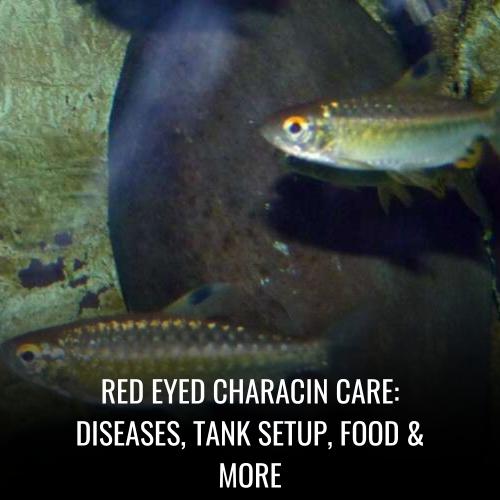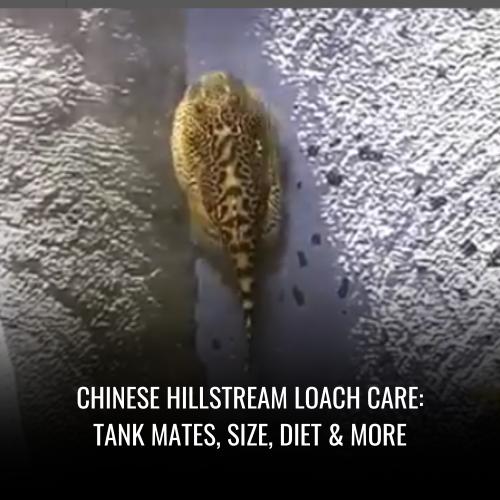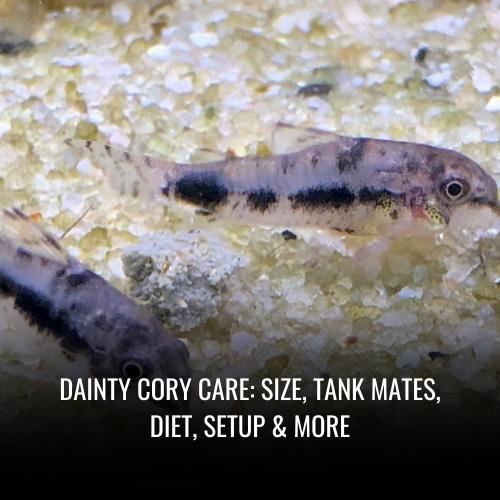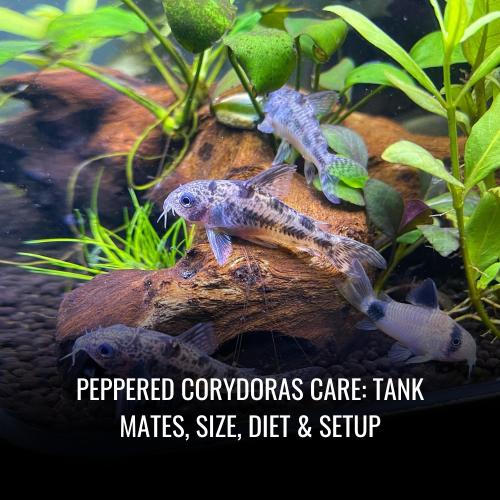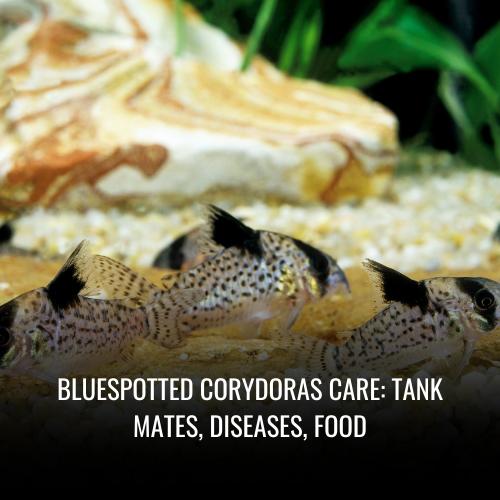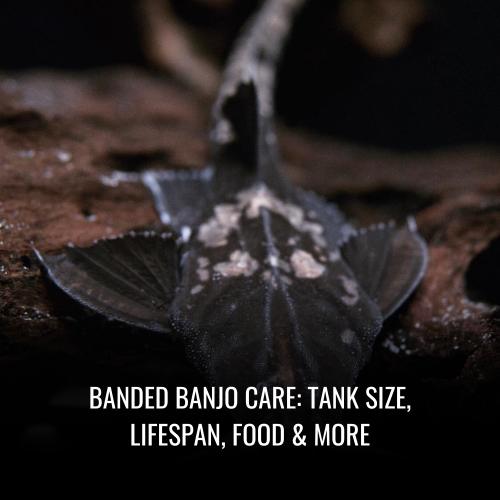Corydoras armatus Care: Size, Tank Mates, Diet, Setup
This post contains affiliate links. As an Amazon Associate, we earn from qualifying purchases.
The Corydoras armatus, a gem among cool fish for any aquarium enthusiast, thrives in a well-maintained community aquarium. Originating from the lush waters of South America, these peaceful schooling fish are celebrated for their unique appearance, featuring a dark silvery-grey complexion adorned with dark spots that fade as they age. In terms of aquarium care, a gravel substrate should be well-rinsed to protect their delicate barbels, and a filtration system is crucial to keep their environment pristine.
For feeding, a quality flake or algae wafers will keep them healthy and active. Delicate yet adaptable, Corydoras armatus are a delightful choice for both novice and seasoned aquarists looking to create a peaceful community of fresh water fish.
| Attribute | Information |
|---|---|
| Scientific name | Corydoras armatus |
| Common name | Armored catfish |
| Family | Callichthyidae |
| Usual size in fish tanks | 2-3 inches |
| Recommended pH range | 6.0-7.5 |
| Recommended water hardness | 2-12 dGH |
| Recommended temperature | 72-78°F (22-26°C) |
| Reproduction | Egg scatterer |
| Origin | South America, Amazon basin |
| Temperament to own species | Peaceful |
| Temperament toward other fish | Peaceful |
| Usual place in the tank | Bottom |
| Lifespan | 5-8 years |
| Tank size requirement | Minimum 20 gallons |
| Filtration system | Gentle filtration |
| Sexual dimorphism | Females are larger and wider |
| Substrate cleaning | Excellent scavenger |
Scientific Name
The Corydoras armatus, recognized by aquarists for its armored physique and captivating behavior, is a freshwater fish scientifically identified by the same name, Corydoras armatus. Synonymous with its robust scientific designation is the name Callichthys armatus, which some ichthyologists may refer to, highlighting its place within the diverse Callichthyidae family. This fascinating species is indigenous to the verdant ecosystems of the Upper Amazon River basin, a testament to the richness of South America’s aquatic habitats.
Here’s a quick profile overview of the Corydoras armatus:
| Scientific Name | Synonym | Family | Native Region |
|---|---|---|---|
| Corydoras armatus | Callichthys armatus | Callichthyidae | Upper Amazon River basin |
Adept at navigating the soft riverbeds in their natural South American waters, these creatures have adapted well to life in the aquarium, provided their environment emulates the calm flow and cleanliness of their native habitat.
Average Size
With its petite stature, the Corydoras armatus, or dwarf Corydoras, is an enchanting addition to any community aquarium. The average size of an adult Corydoras armatus hovers around 4 cm or 1.5 inches, with some reaching a maximum of 5 cm, or just shy of 2 inches. This small size makes them ideal occupants for smaller fish tanks, where they can comfortably explore and forage along the bottom.
Sexual dimorphism among Corydoras armatus also corresponds to size. Females can be identified by their rounder, more sizeable abdomens, a feature especially pronounced when gravid with eggs.
Here’s a concise summary of their size-related features:
| Feature | Detail |
|---|---|
| Average Size | 4 cm (1.5 inches) |
| Maximum Size | 5 cm (nearly 2 inches) |
| Sexual Dimorphism | Females with rounded belly |
| Preferred Habitat | Bottom-dwelling in tanks |
| Role in Aquarium | Foraging bottom feeders |
Perfectly proportioned for life at the bottom, the Corydoras armatus is a micro marvel of the aquarium world.
Lifespan
The Corydoras armatus captivates aquarists not only with its charm but also with its relatively modest lifespan, typically ranging from 3 to 5 years. A variety of factors play a pivotal role in determining how long these cool fish will thrive within your aquarium. Paramount among these are water quality, diet, and the compatibility of tank mates, which collectively can either curtail or extend the lifespan of this species.
In a well-cared-for aquarium, some individuals may only reach the lower end of the lifespan spectrum while others may surpass expectations, living closer to 5 years or even beyond. Regular health monitoring and a commitment to friendly aquarium keeping practices are fundamental to supporting the full potential of your Corydoras armatus’ lifespan.
| Lifespan Influencing Factors | Measures for Longevity |
|---|---|
| Water Quality | Maintain clean and correct water parameters |
| Diet | Provide a balanced diet with quality flake food and more |
| Tank Mates | Choose peaceful, compatible species |
By adhering to these guidelines, aquarists can create a harmonious space for these fascinating fish, ideally seeing them flourish for years to come.
Natural Habitat
The natural habitat of Corydoras armatus is as unique as the fish itself. These enchanting creatures call the Río Huallaga in Peru their home, thriving in its swiftly flowing blackwaters. The clear, tea-colored waters of this tributary, part of the larger Río Marañón system, are known for their low light and distinctive makeup – a feature that truly sets the backdrop for the Armatus Corydoras existence.
Here’s a quick overview of their habitat essentials:
| Habitat Component | Details |
|---|---|
| Water Type | Blackwaters, swiftly flowing |
| Substrate | White sand |
| Aquatic Vegetation | Sparse |
| Landscape Elements | Submerged wood, driftwood, leaf litter |
| Water Conditions | Variable, subject to natural weather fluctuations |
Inhabitants of such an environment, the Armatus Corydoras have adapted to a life amidst fluctuating water conditions. Their preference for clear, dynamic habitats contributes greatly to their behavior and survival, setting them apart as a fascinating species in the aquarium hobby.
Appearance
In the world of cool fish, the appearance of the Armatus Corydoras is truly captivating. Their bodies flaunt a dark silvery-grey color adorned with irregular dark spots that grace their flanks. Observers will notice a unique transformation as these fish mature: the once prominent spots become more subdued over time, giving older individuals a sleeker look compared to their juvenile counterparts.
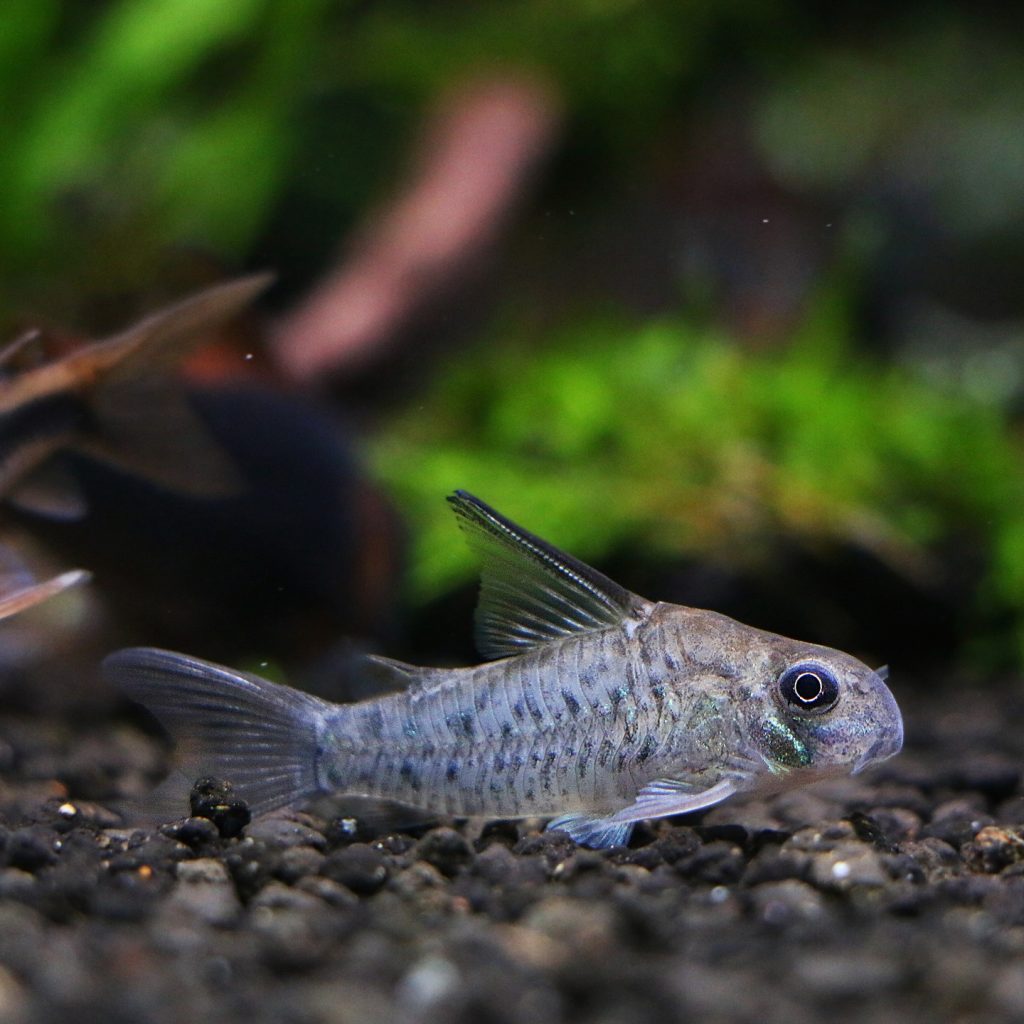
The juvenile Armatus Corydoras, on the other hand, sport significantly more pronounced dark spots, giving each one a distinctly youthful radiance. The species’ tall, pointed dorsal fin stands out as an architectural marvel in the community aquarium, with its first two rays dipped in a dark grey shade reminiscent of the intriguing depths from which they hail.
Fins are essential in the picturesque silhouette of the Armatus Corydoras, and this species does not disappoint. Their remaining fins are nearly transparent, shimmering with faint darker spotting and banding that enchantingly capture and play with the light. The table below highlights the key features of their finnage:
| Fin Type | Description |
|---|---|
| Dorsal Fin | Tall and pointed with dark grey first rays |
| Other Fins | Translucent with subtle spots and banding |
Indeed, these peaceful schooling fish embody a delicate balance of shadow and light, blending harmoniously into the aquatic mosaic of any friendly aquarium.
Behavior & Temperament
In the tranquil community of freshwater aquariums, the Corydoras armatus emerges as an exemplar of peaceful coexistence. These gentle catfish from the bustling waters of South America are not known to be fin nippers and display a docile demeanor that makes them ideal residents for a diverse community tank. They are neither aggressive towards their own kind nor other aquatic companions.
However, it is crucial to shield them from larger predatory tank mates and sizeable crustaceans that may mistake them for prey. Mindful aquarium hobbyists also take special care to maintain pristine water conditions, as Corydoras armatus possesses delicate barbels that can be easily damaged by poor water quality or improper substrate choices.
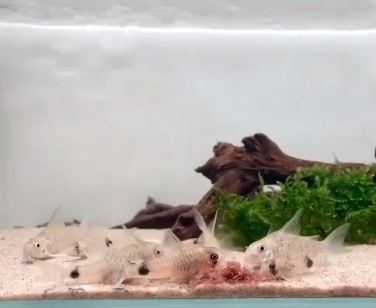
Are Corydoras armatus Fin Nippers?
Corydoras armatus are considered one of the more well-behaved tenants of a community aquarium; they refrain from nipping at the fins of their tank mates. This trait allows them to seamlessly integrate into an environment shared with a variety of other peaceful fish species.
Are Corydoras armatus Aggressive To Each Other & Other Fish?
With a temperament as smooth as the gravel substrate they traverse, Corydoras armatus exhibit no aggression towards each other or their aquatic neighbors. This makes them a highly compatible choice for the collective harmony of a community tank.
Are Corydoras armatus Friendly To Each Other & Other Fish?
Social interaction is a highlight of the Corydoras armatus species, as they exhibit amiable behaviors towards one another and other fish. Their congenial nature supports a thriving community dynamic within the aquarium.
Are Corydoras armatus Schooling Fish?
Corydoras armatus embody the essence of an active schooling species. Found shoaling in the wild, they best express their natural behaviors when kept in groups within the aquarium, a practice that enhances their overall health and vitality.
Can You Have Just One Corydoras armatus In The Tank?
Isolation is not suitable for the gregarious Corydoras armatus. A solitary existence can lead to stress and unwanted behavior changes, making it imperative to house them in congenial groups to witness their full behavioral repertoire and ensure their well-being.
Do Corydoras armatus Need To Be In Groups?
These scaleless wonders are undeniably social creatures which thrive when surrounded by their own kind. A minimum group size of six is recommended to uphold the natural shoaling instinct of the Corydoras armatus. This not only promotes healthy behavior but also enhances the overall viewing pleasure, allowing the aquarist to observe the collective elegance of their synchronized movements.
Food & Diet
Corydoras armatus, with their omnivorous appetites, are a delight for the dedicated aquarist who prioritizes balance and variety in the staple diet of these charming freshwater fish. Feeding routines should focus on moderate quantities to prevent water pollution – a small, daily feast over a singular sizable meal is the recommended approach.
Including options like PRONOVO Sticks and CORYDORAS TAB TAB in their dietary plan ensures these appealing catfish receive ample nutrients for growth and vitality, laying the foundation for a healthy, active aquarium life.
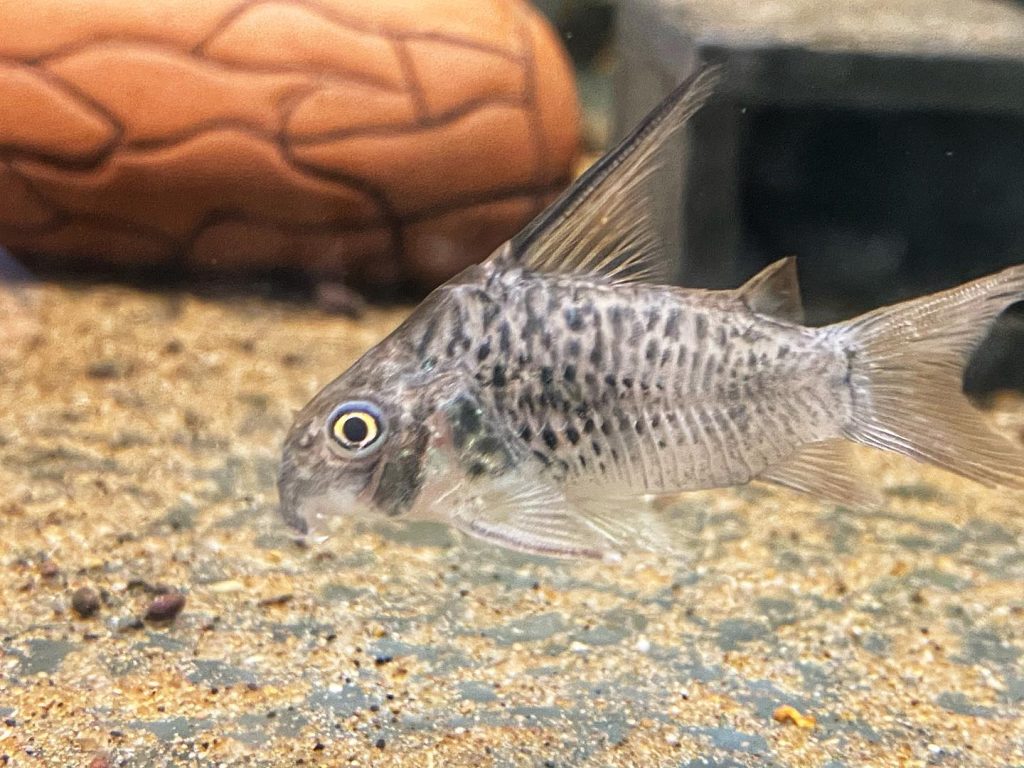
Do Corydoras armatus Eat Algae?
Corydoras armatus, although not fervent algae enthusiasts, will occasionally partake in its consumption. However, to sustain their nutritional needs, high-quality sinking dried foods such as pellets and algae wafers should be a staple in their diet. Varied offerings like Tubifex, bloodworms, and decapsulated brine shrimp, provided in small, measured amounts, cater to their omnivorous nature and contribute to their vibrant coloration and robust health.
Do Corydoras armatus Eat Shrimp?
These catfish are known to savour small live or frozen fare, including shrimp, which should form a part of their dietary palette for overall health maintenance. The Corydoras armatus will exhibit optimal well-being with such variety in their diet, revealing more spirited and vivid appearances within the community tank.
Do Corydoras armatus Eat Bloodworms?
Indeed, Corydoras armatus will express appreciation for bloodworms, a suitable treat offered twice weekly. These offerings, consisting of small, live, frozen, or freeze-dried bloodworms, are vital for a diverse feeding regimen which is central to sustaining their energetic behavior and striking coloration.
Do Corydoras armatus Eat Mosquito Larvae?
These flexible omnivores indeed consume mosquito larvae, instinctively foraging for such live offerings in their natural South American habitats and aquarium settings alike. Incorporating mosquito larvae into their diet is advantageous, as it supplies essential proteins and nutrients, facilitating a thriving and authentic environment for these fascinating fish.
Do Corydoras armatus Eat Planaria?
As omnivorous bottom dwellers, Corydoras armatus have developed a keen sense for foraging, which leads them to occasionally consume planaria among other creatures. While supplementing their diet with high-quality sinking dried foods, their instinctual behavior may also contribute to the natural control of planaria populations within the aquarium ecosystem.
Do Corydoras armatus Eat Plants?
Corydoras armatus are not primarily herbivorous and do not intentionally consume aquarium plants as a significant part of their diet. While they scavenge for food at the tank’s bottom, a well-managed feeding schedule and diverse nutritional options will generally dissuade them from nibbling on any plant life, ensuring the lush aesthetic of their aquatic surroundings is maintained.
Sexing: Male vs Female
Discerning between male and female Corydoras armatus can be a subtle art in aquarium hobby, but there are distinct features to help identify their sex. Females are notably plumper when inspected from above, with a conspicuous, rounded underbelly, often a telltale sign they are carrying eggs. In contrast, males are generally slimmer and shorter in length.
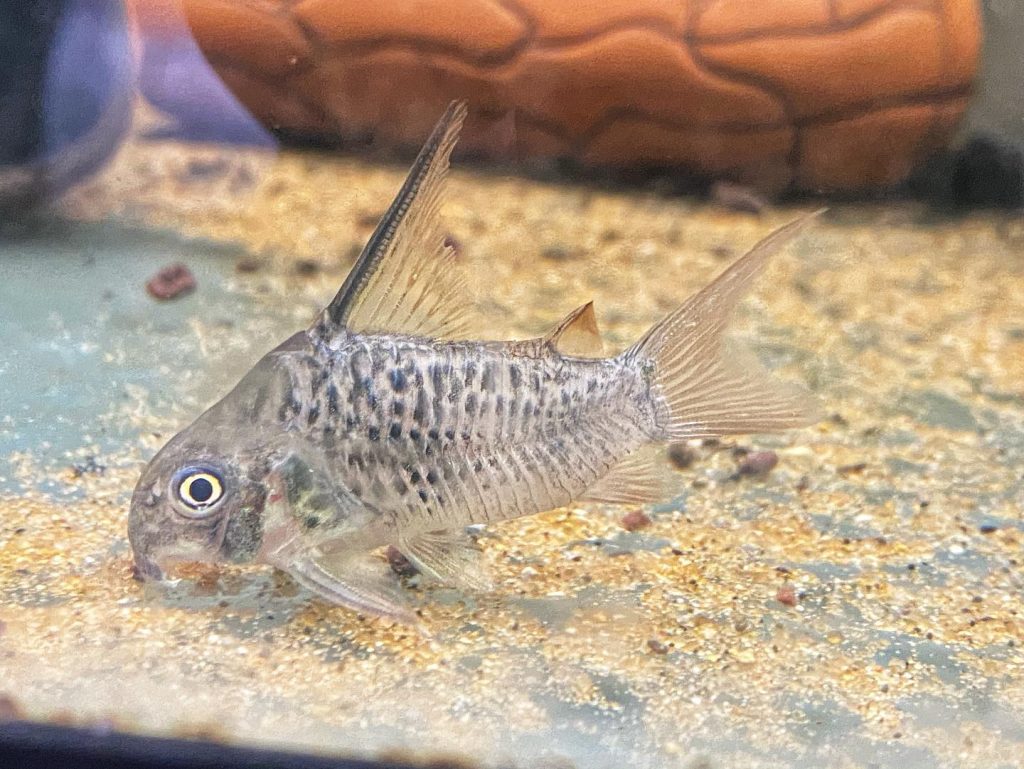
A mature female’s body shape is rounder and broader, contributing to their slightly larger size when compared to their male counterparts. These differences become more pronounced during conditioning, facilitating the sexing process for breeders and enthusiasts alike.
| Characteristic | Male Corydoras armatus | Female Corydoras armatus |
|---|---|---|
| Length | Shorter | Longer |
| Body Shape | Slimmer | Rounder and broader |
| Underbelly | Flatter | Larger and more rounded |
| Size | Smaller | Slightly larger |
Identifying the sex of Corydoras armatus is key for breeding purposes and understanding social dynamics within the community aquarium. By taking note of body shape and size, aquarists can differentiate between the two sexes and ensure a harmonious and friendly aquarium keeping experience.
Corydoras armatus Tank Mates
Selecting the right tank mates for Corydoras armatus ensures a serene and safe environment for these amiable fish. These scaleless fish are inherently calm, making them unsuitable companions for larger, predatory fish or sizable crustaceans that may view them as prey. To preserve the tranquility of your community aquarium, introduce smaller species before adding any larger ones. This order of introduction helps safeguard the delicate Corydoras armatus from any undue stress or danger.
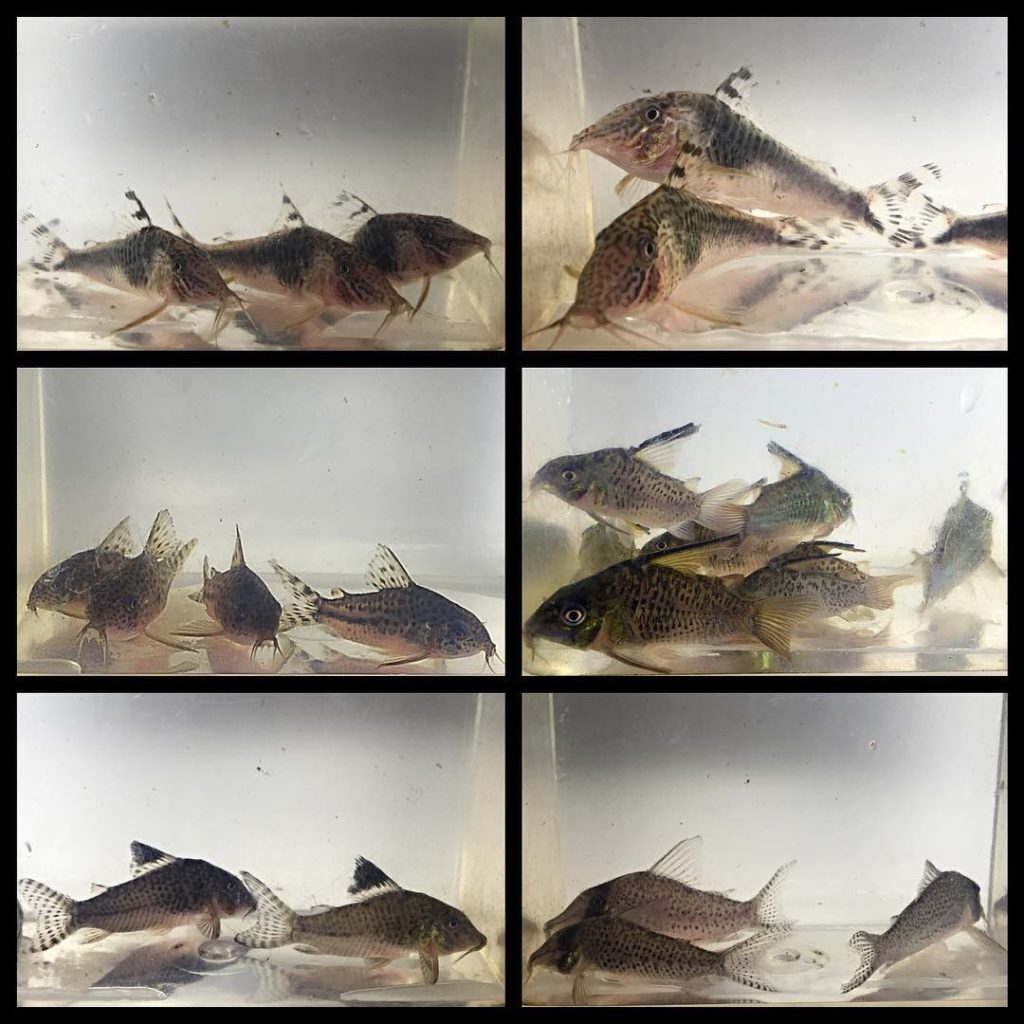
In a community tank, behavioral harmony is paramount. Aggressive or exceedingly territorial species can disrupt the peace, causing undue stress for these peaceful schooling fish. Therefore, it’s crucial to research and select tank mates that share a similar disposition and water parameters. To prevent unintended hybridization, which can arise from mixing different species within the same genus, a species-specific approach is recommended where feasible.
Below is a helpful guide to ensure your Corydoras armatus thrive with congenial companions:
| Ideal Tank Mates | Avoid |
|---|---|
| Peaceful community fish | Aggressive/territorial fish |
| Smaller fish species | Larger predatory fish |
| Non-aggressive inverts | Large crustaceans |
Remember, thoughtful selection of tank mates and a well-planned introduction sequence are key to fostering a delightful and stress-free home for these beloved fresh water fish.
Aquarium Setup
Creating the perfect habitat for Corydoras armatus begins with understanding the specific requirements for a thriving aquarium setup. These captivating bottom dwellers require a carefully crafted environment to stay healthy and active. Here’s how you can establish a suitable home for these enchanting creatures.
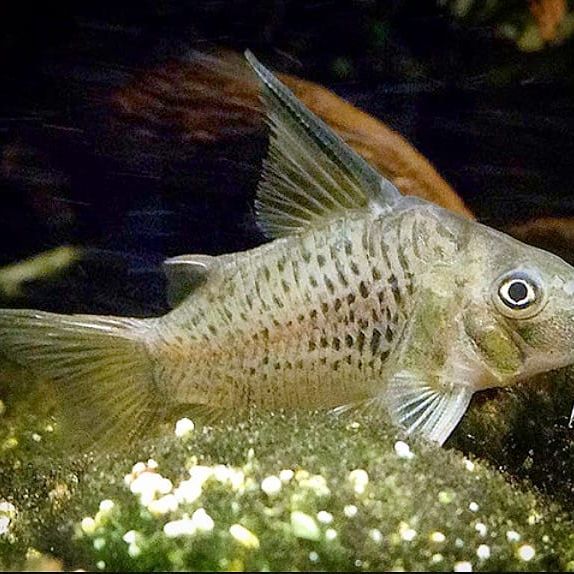
Ideal Tank Size
An Armatus Corydoras is best housed in an aquarium that provides ample space for their exploratory nature. The recommended tank size for these delightful fish is at least 57 litres (15 US gallons). Providing them with enough room is essential for their well-being and ensures a stable environment that supports their schooling behavior. Adequately sizing your tank also allows for proper water quality management, a crucial aspect of keeping these sensitive fish healthy.
Ideal Water Parameters
Corydoras armatus thrive in freshwater settings that echo their native South American habitats. Precise control of water conditions is paramount for the survival and vitality of your finned friends. Aim for a pH range between 6.5 and 7.5, which offers a neutral to slightly acidic environment preferred by these fish. Water temperatures should be consistently maintained between 73-79°F (22-26°C) to simulate their natural tropical climate.
General hardness (GH) is another key water parameter, best kept within the range of 2-15, and you should aim for total dissolved solids (TDS) levels of 36-215 to create optimal living conditions for Corydoras armatus.
Filtration
The role of filtration in an aquarium with Corydoras armatus cannot be overstated. As the custodians of the tank’s floor, these fish benefit significantly from pristine water quality. A capable filtration system is essential to eliminate waste, debris, and harmful pollutants. For the most natural experience, consider integrating aquarium-safe peat into the filtration, creating blackwater conditions reminiscent of the soft, acidic waters found in their wild habitats.
Perform regular maintenance, such as cleaning and changing the filter media as required, to preserve the effectiveness of the system and provide the fish with a clean and hospitable environment.
Lighting
Lighting is a nuanced aspect of the aquarium setup that demands attention. While a 100 (UK) gallon tank might require around 130 Watts of lighting, this guideline can vary greatly depending on the unique needs of the species within. For Corydoras armatus, a moderate level of lighting suffices – enough to support any live plants and replicate a subdued natural light habitat, but not so intense as to cause undue stress.
When selecting your lighting system, also consider the type of substrate in your aquarium as it can influence the quality and distribution of light, with sand or smooth gravel being an ideal choice for these light-sensitive fish. Monitoring the behavior and coloration of your fish can help you determine if the lighting provided meets their needs.
Common Possible Diseases & Prevention
Maintaining optimal health involves several key practices that can prevent a variety of diseases. Engaging in regular physical activity, eating a nutritious diet, and adhering to good hygiene can stave off chronic conditions such as heart disease, diabetes, and certain cancers.
Immunizations: Up-to-date vaccinations are vital in curtailing infectious diseases like influenza and measles.
Weight & Stress: Keeping a healthy weight and managing stress contribute to lowering the risks associated with hypertension and mental health issues.
Health Check-ups: Routine visits to a healthcare professional aid in the early detection and management of conditions like high cholesterol and diabetes, providing an opportunity for timely intervention.
Lifestyle Choices: Avoiding harmful habits such as smoking and excessive alcohol intake is imperative to reduce the likelihood of developing severe diseases, including lung and liver diseases.
Healthy Habits Checklist:
- Regular exercise
- Balanced diet
- Proper hygiene
- Updated immunizations
- Weight management
- Stress reduction
- Regular health screenings
- Smoking and alcohol avoidance
By adhering to these guidelines, individuals can significantly decrease the risk of many common diseases and enhance their overall well-being.
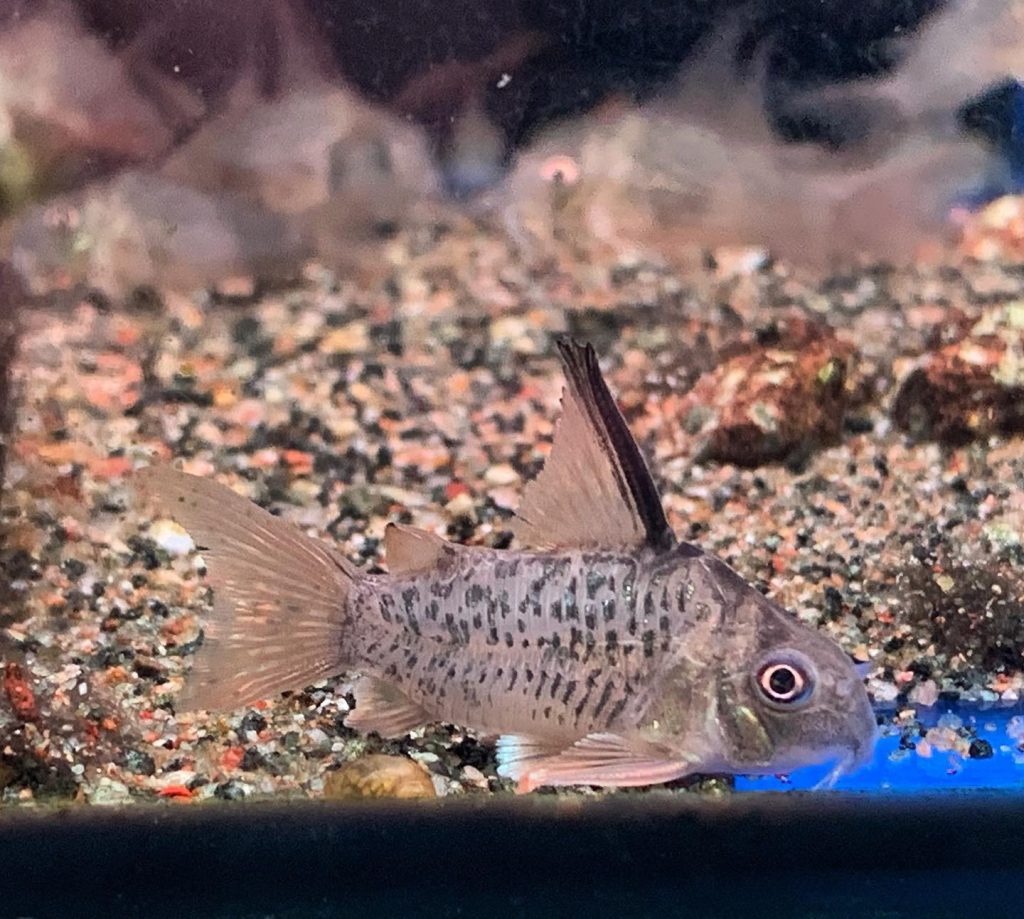
Breeding Corydoras armatus In Aquarium
Breeding the enchanting Corydoras armatus, while a rewarding venture for fish enthusiasts, comes with its set of challenges. This fresh water fish, native to the tranquil waters of South America, requires a dedicated breeding tank to foster the right environment. Although breeding success in captivity has yet to be documented, adopting the same spawning techniques as related Corydoras species is a step in the right direction.
Here’s a quick setup guide for aspiring breeders:
- Water Conditions: Soft, acidic water
- Flow: Low water flow
- Lighting: Subdued
To recreate their natural blackwater domains, consider introducing dried leaves that subtly tint the water. Integrating peat into the filter periodically can amplify this effect. Maintaining a gravel substrate that aligns with their scaleless and delicate nature, along with thorough cleanliness, is critical to protect their sensitive barbels and ensure a healthy breeding ground.
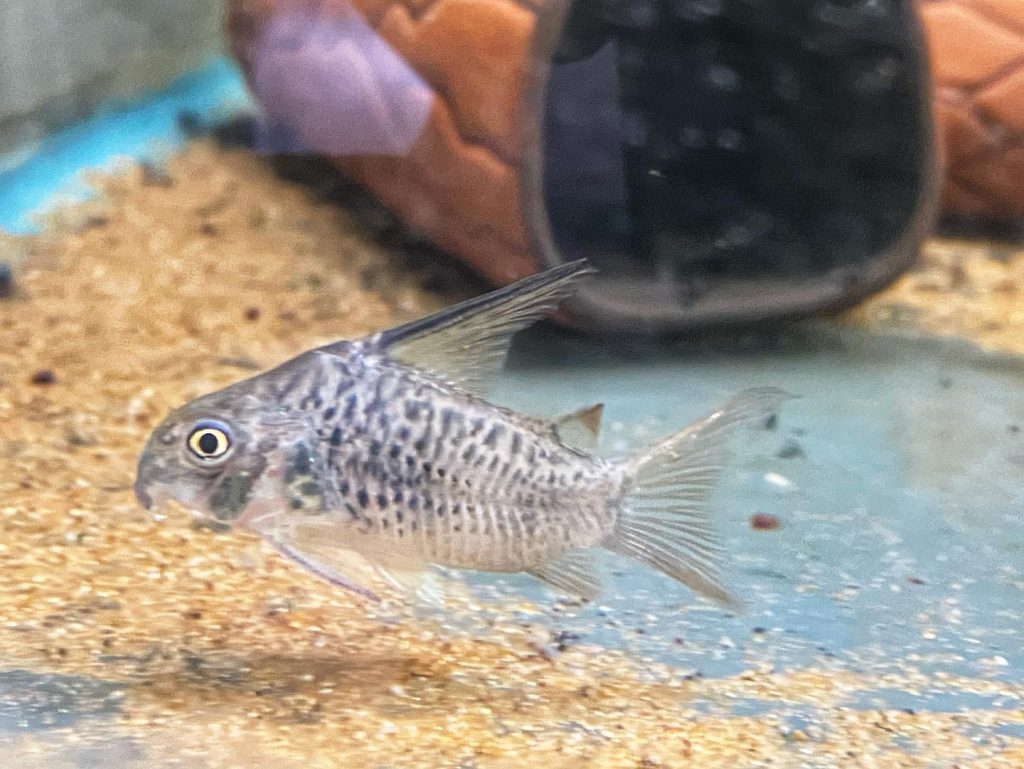
For optimal breeding conditions:
- Add dried leaves for water staining
- Use aquarium-safe peat for filtration
- Perform consistent water changes
Recreating these conditions supports the spawning process, although it’s vital to bear in mind that Corydoras armatus is a delicate fish that necessitates vigilant care and attention to water parameters.

